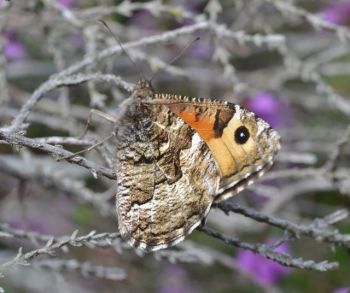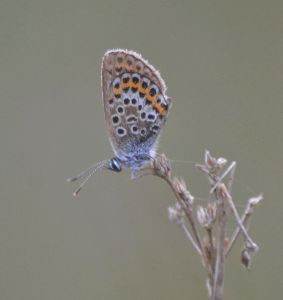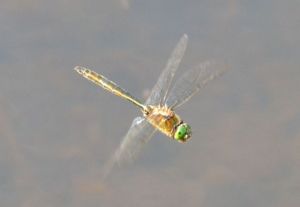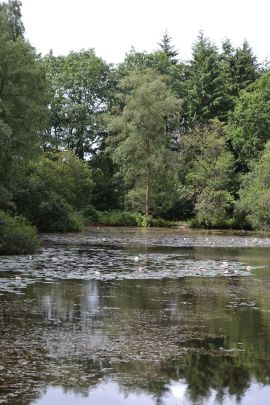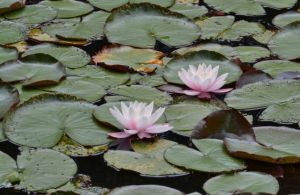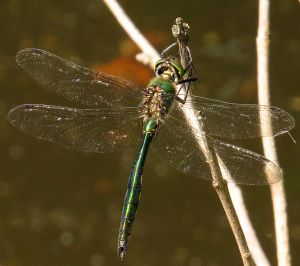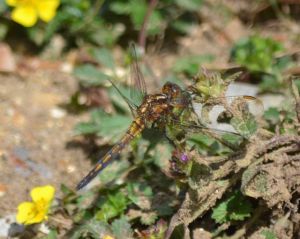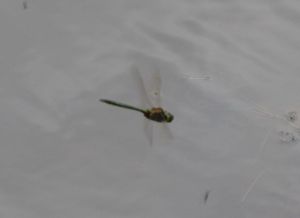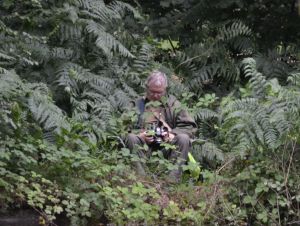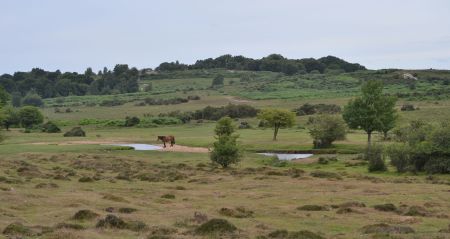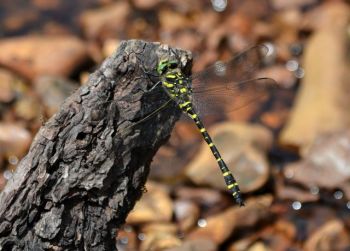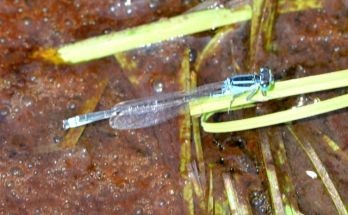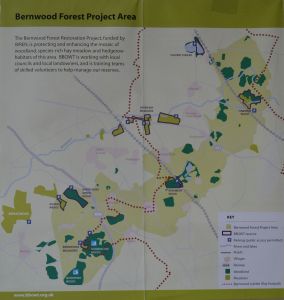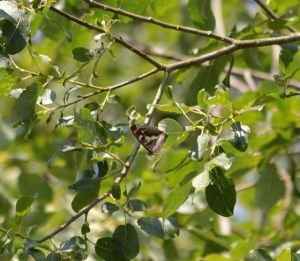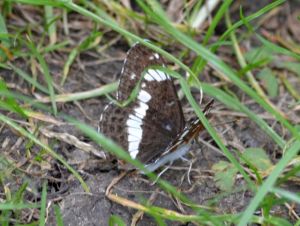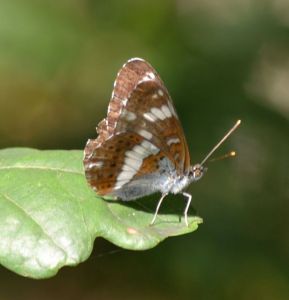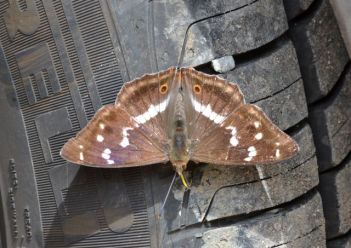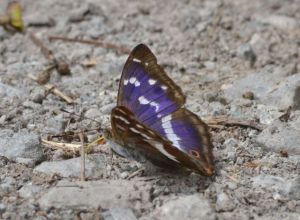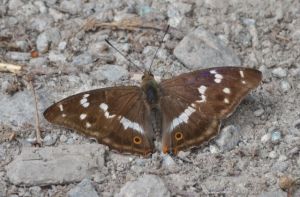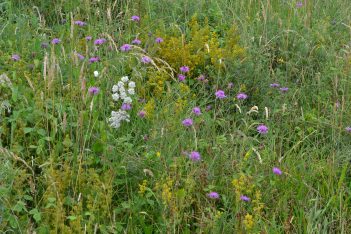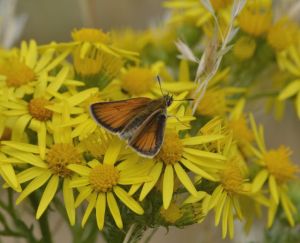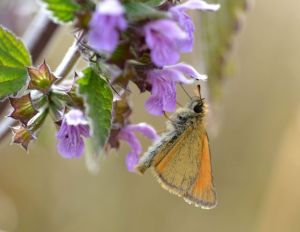The English summer has lost its way again in the last two weeks. I cannot recall a year like 2015 for day after day of grey cloud but little actual rain. Then yesterday (24th) it rained steadily all day, which though boring to sit out refreshed the countryside as was needed. Today was forecast to present a good insect watching window at last, so in company with Ewan I headed back to the area of heaths south-east of Reading and north of the M3 first visited in midweek.
Our first stop was Yateley Common (SU825595) to seek out the two characteristic butterflies of English lowland heaths. The site, comprising 476 acres of heathland, woods and ponds is managed as a country park by Hampshire County Council. So much for the fair weather forecast! Once again it was a morning of waiting for brief bursts of sunshine through endless and oppressive grey cloud. For an hour and a half we explored likely looking habitat without finding anything. I am used to seeing Grayling in stony patches of heath or posing for the camera on dead wood or fence posts, but that’s when the sun is shining. Eventually Ewan put one up as we walked then used his bushman’s skills to relocate it several times.
Here was the answer: the Grayling must all have been sheltering down in the bell heather and ferns. The advantage of the cool and breezy conditions, as is usual was that this individual allowed a point blank approach. The macro lens image (above) brings out the subtle beauty of this master of camouflage. We could have trampled habitat trying to flush more of them but with acceptable pictures gained the job was done and we try not to do the first option anyway.
Grayling, one of the later butterflies of the season to emerge, is locally common on southern lowland heaths or coastal cliffs and dunes. More than any other British species it is confined to dry, sun-baked places where the soil is poor and vegetation sparse. I have seen large numbers on the Dorset Heaths and usually stumble across them during August dragon flying visits to the New Forest. When the forewing is tucked down so the eye spots are hidden, the grey and brown marbling of the underwings makes these butterflies very difficult to pick out. But once they are startled the forewing pops up again to expose the bright eye spot.
Grayling sites on southern heaths are often shared with the diminutive Silver-studded Blue. This declining species is now absent from four-fifths of its former range but from mid-June through into August can be present in thousands where it does occur. I had already seen them this year at a plentiful site, nearby Silchester Common (SU 620620) but didn’t get good enough pictures on that day. Today’s cooler conditions were better for photography, as the nicely-posed male (above) nectaring on Bell Heather demonstrates. This was one of just two SSB that we found at Yateley Common today.
The silver studs of the species’ name are in the centre of the black dots around the hind-wing margins, but do not stand out in today’s picture. The sequence below presents the underwing detail of three other blues for comparison.
- Common Blue
- Chalkhill Blue
- Adonis Blue

